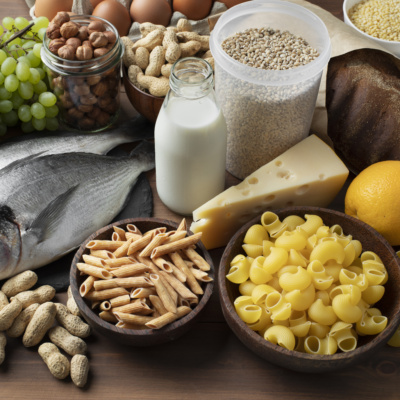top of mind news
- How Hotel Restaurants are Climbing Back from COVID-19
- New Restaurants are Starting to Open in the Pandemic
- National Restaurant Association Updates COVID-19 Safety Guidelines For Businesses
- How Governments Around The World Are Trying To Get Customers Back Into Restaurants
- Restaurant Inventory Management: A Love Hate Relationship
Poultry
 Chicken slaughter was down 3.4% for the week ending October 17th but bird weights look to be peaking, seasonally, and were flat with year ago levels. Excluding the mis-aligned Labor Day weeks, RTC production is down 1.8% across the past five weeks and seasonal declines are expected to temper production into year’s end. Still, integrators seem disinterested in rising output in the near-term. Tighter production schedules are supporting wholesale chicken prices, with the entire parts structure firming into late October. The wing markets are the highest for October in nearly a decade, but seasonal downside prices are likely to emerge later this fall as interest trends towards holiday hams and turkeys.
Chicken slaughter was down 3.4% for the week ending October 17th but bird weights look to be peaking, seasonally, and were flat with year ago levels. Excluding the mis-aligned Labor Day weeks, RTC production is down 1.8% across the past five weeks and seasonal declines are expected to temper production into year’s end. Still, integrators seem disinterested in rising output in the near-term. Tighter production schedules are supporting wholesale chicken prices, with the entire parts structure firming into late October. The wing markets are the highest for October in nearly a decade, but seasonal downside prices are likely to emerge later this fall as interest trends towards holiday hams and turkeys.
Beef
Beef production came in 2.6% above year ago levels last week, despite slaughter coming in a more modest 0.5% better than last year. Elevated levels of beef output continue to pressure the USDA cutouts, with last week’s average Choice cutout value being the lowest since early August. The weakening loin primal contributed to last week’s downside, with strips and top butts but the PSMO tenderloins furthered their seasonal price gains. The fat trim and grinds were also lower last week, with beef 50’s falling back towards the lower $40’s area. Yet, spot beef sales have been active amid these lower prices.
Pork
Last week’s hog slaughter faded from both the prior week as well as the year prior, but pork output was up 0.2% (w/w) and up 0.4% from last year. Smaller production schedules relative to initial early fall expectations continue to support wholesale prices, but price losses were noted across the hams as well as bellies late last week. Still, a continuation of strong exports may give support to wholesale pork prices, but seasonal output increases should temper some of that upside potential across the wholesale markets deeper into the fall.
THE SEA
Seafood
The salmon markets have mostly traded at engaging price levels during the early fall due in part to lackluster foodservice demand in the U.S. and abroad. U.S. imports of salmon were strong this summer with August imports 7.1% bigger than the previous year. Salmon, and other seafood consumption could take a hit this winter if restaurant activity is curbed by rising COVID cases.
THE GARDEN
Produce
The lettuce markets continue to trade at inflated price levels. Supplies remain light with iceberg shipments as of late subpar. The main harvest area is starting to shift to Huron California and will soon shift again to the Yuma/Imperial Valley. History suggests this could be accompanied with some modest price relief. The tomato markets remain inflated as well due to short supplies. U.S. shipments have been tracking 24% below prior year. The downside price risk in the tomato markets may be only modest in the near term.
THE KITCHEN SINK
Dairy
The CME cheese block and barrel markets are historically high. U.S. cheese inventories on September 31st were down 1.0% (y/y) and were 1.3% smaller (m/m). Although the spot cheese markets typically decline in the fall, additional U.S. government food box purchasing (just announced) may keep prices elevated. CME spot butter prices remained soft last week. September 30th domestic butter stocks were up 18.3% (y/y) and are more than adequate entering the holiday baking season. Lackluster food service butter demand may temper seasonal price increases for butter that usually occur during November.
Grains
The wheat markets have remained firm during the last week due in a large part to crop concerns in Russia as well as South America. The USDA’s projections for adequate to ample world wheat supplies now seem suspect. That said, the wheat markets are overdue for at least a short-term correction lower.
Oil
Last week nearby natural gas futures were the highest since January 2019. Some natural gas processing disruptions in Louisiana due to multiple hurricanes this fall and cold temperatures in the Midwest may keep prices firm in the near term.













